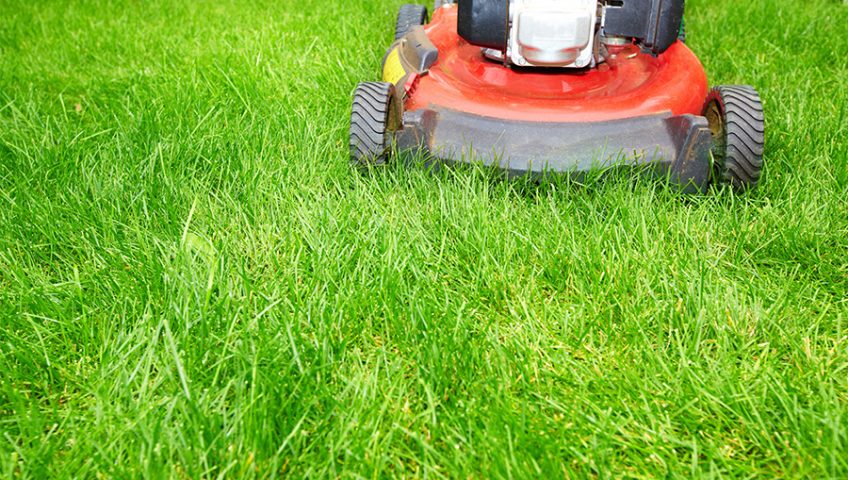Spring Lawn Care Tips
In the spring, everything begins to grow rapidly after the dormant period of winter. Consider these spring lawn care tips to help bring your yard back to life:
As grass comes out of dormancy from the long winter, it should be checked for lawn diseases, such as dead spots and insects like grubs. Healthy Lawns that receive proper year-round lawn care, yard care and lawn treatments tend to be more resistant to disease and pests all year long.
Spring lawn care begins with lawn fertilizing. Proper fertilization of your lawn in the spring is vital because this feeding replenishes the reserves used during the dormant winter period.
As the mowing season begins, be sure to review our lawn care tips for advice on proper lawn mowing techniques and safety procedures.
Allowing grass clippings to remain on the lawn after mowing is actually beneficial. This process is known as grass-cycling. After a long winter, check the thatch level to see if the lawn would benefit from dethatching and aeration.
Spring lawn care can help prevent grassy weeds like crabgrass. Spring lawn care such as proper maintenance of Landscaping beds can also prevent weeds.
Do you know the pH level of your soil? Having your soil professionally tested can help you determine what compounds might need to be added to create the best growing environment for turf and trees.
Summer Lawn Care Tips
Longer days, more light and more heat mean the height of the growing season – but too much heat can wilt your summer enjoyment. Learn how you can make the most of the season with these summer lawn care tips:
Proper watering and water conservation is important at any time of year, but particularly when heat and a lack of rain lead to water deficits and drought.
Learn more about proper watering techniques in our watering tips section.
Evaluate your lawn regularly for signs of irregular color and texture. These can be signs of damage that may result from pests or disease.
Proper year-round lawn care keeps a lawn healthy and prevents weeds, disease and pests. But sometimes, insects you may not notice can travel from the yard to your home. To stop them, Tip-Top recommends pest control to keep the bugs on the outside. You can also reduce their outside presence by treating the lawn for insects such as fleas, ticks and fire ants.
While lawns are generally the focal point of most yards, don’t forget about trees and shrubs. Well-maintained landscaping adds dimensionality to a home and increases its value.
In the heat of the summer, you may be tempted to mow your lawn in shorts and flip flops, but Tip-Top’s trained professionals remind you to stay safe by wearing long pants and closed-toed shoes.
Also, no matter what outdoor activity you’re enjoying, be sure to stay hydrated with plenty of water. See our mowing tips or more mowing advice.
The essentials of good summer lawn care are watering, fertilizing and proper mowing. However, sometimes an underlying problem (such as bare spots or severely damaged turf) requires additional measures.
Fall Lawn Care Tips
As the days grow shorter and the temperatures begin to drop, the fall season is a critical time to prepare your home for the long winter.
Follow these fall lawn care tips to make the fall season last as long as possible before winter begins:
During the fall, your lawn is getting ready to go dormant for the winter. Fertilizing during this period is vital to provide an extra boost of nutrients that will be stored and used during dormancy. Roots actually continue to grow underground throughout the winter and rely on the stored food until spring. Power seeding will increase turf density and improve the overall health and appearance of your lawn.
Power seeding in the fall season helps the lawn recover from the heavy use from the summer and it influences the lawn’s look for the following spring. A dense lawn is also the best natural defense against weed and insect damage.
The fall is also a great time to aerate your yard. Lawn aerating combats grass compaction from summer traffic and encourages the uptake of nutrients and oxygen.
If your lawn is starting to get thin, you can also reseed your grass.
When the leaves start to fall, rake or blow the lawn clean at least once a week. Keeping your lawn leaf-free doesn’t only look better; it’s also healthier for your lawn to be leaf-free. Leaves block sunlight, which is vital in the fall as the lawn stores food for the dormant winter season.
The fall season is also the time to apply grub control and check and treat your yard for other pests. If you wait until spring, your turf will suffer.
Before the winter hits is also a good time to winterize your trees and shrubs.
Winter Lawn Care Tips
Just because there’s a chill in the air doesn’t mean you should be ignoring your yard…
Winter is the best season to prune trees since pruning encourages new growth and fruit production. Find out more about pruning trees and bushes in our section on tree care tips.
Maintaining a properly functioning lawn mower and sharp mower blades will ensure an evenly cut yard, which helps with disease prevention and improves the overall appearance of your lawn.
Read over our lawn mower tips so you can make sure your lawn mower is ready to go when spring arrives.
As winter ends and snow disappears, Snow Mold can be a threat to your lawn. This fungus develops in cold, wet weather but can be treated with a special fungicide.
While many lawns and trees go dormant and require less attention in the winter, it is a perfect time to plan for their year-round care.

